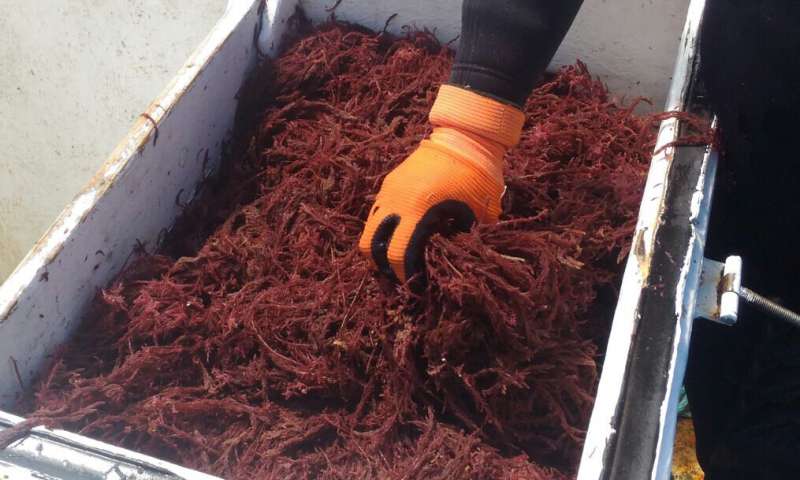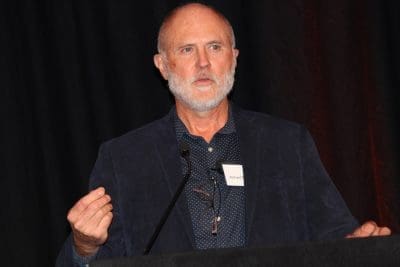PRESSURE has this week ramped up on the development of methane reducing feed additives as the Federal Government pledges to reduce its methane emissions by 30 percent in the next decade.
The non-binding pledge is for an “absolute reduction” in emissions, meaning methane emissions can not be offset. The Federal Government is insisting that the livestock industry will not face any taxes or herd reducing measures and has described it as complimentary to the industry’s plan to become carbon neutral by 2030.
But the reliance on seaweed feed additives has been clear, with the Federal Government committing $8 million to support the commercialisation of Asparagopsis and $5 million to develop technologies to deliver low emission feed supplements to grazing animals.
With the 2030 deadline a little over seven years away, University of Melbourne professor Richard Eckard said significantly more funding was needed if there was to be widespread use of the supplement in grazing systems. He said the government investment should be more like $50 million.
“Half the cattle in Australia don’t see a human in 12 months,” he said.
“The notion that seaweed is going to solve the problem, that doesn’t help the producer in Longreach or up in the Kimberley. There is a big gap between theory and reality – the theory is that we can reduce methane by 80pc, the reality is that we do not have the technology for grazing industry to respond tomorrow.”
Dr Eckard said the size of the task at hand could not be understated.
“The rumen took 50 million years of evolution to get to where it is, and we decided 20-years-ago that this was a problem and we were going to change it,” he said.
“Now, we are saying that we are going to change 50 million years of evolution in less than eight years.”
Limited impact with feedlots
Feedlots are emerging as the most eligible candidate for Asparagopsis and 3 NOP with commercial trials already underway. But Dr Eckard said widespread use in feedlots would not be enough to achieve the 30pc the reduction.
“If you can imagine a bar chart of where methane comes from, the biggest bar is the beef industry, the second biggest is the sheep industry, the third biggest is dairy and feedlots don’t even show up,” he said.
“Cattle only go through a feedlot for a short part of their life, so even if you halve that it won’t go anywhere near the 30pc reduction.”
Potential in dairy
The dairy industry has been one of the biggest opponents of the pledge, with Australian Dairy Farmers saying it is too early to bank on the development on seaweed. But Dr Eckard said it had the potential for using the feed additives
“Dairy accounts for about a third of Australia’s livestock emissions and farmers have the opportunity to feed cattle twice a day when they come in for milking,” he said.
“The average dairy farmer could knock out half their methane emissions tomorrow if the incentive was there. They could feed 3 NOP or seaweed they could cut half their emissions tomorrow, they could take their nitrogen emissions out by 50pc using coated fertilizer.”
But Dr Eckard said cutting dairy emissions was not the silver bullet.
“Doing some rough calculations, you would need an almost 100pc reduction in dairy emissions to offset the emissions from extensive grazing,” he said.
Early intervention shows most promise
Dr Eckard said there was work underway to reduce methane emissions in extensive grazing systems.
“Early life program has massive programming has massive potential and it just needs a good term of funding,” he said.
“That’s basically the same notion that rumen behaviour is a product of its upbringing. There was some great work done that took one of these methane inhibitors and feeding them to cows and calves through the weaning phase – the calves remained 20pc less methane from then.
“Whatever the calves inherit from their parents at the time of birth, through to weaning seams to be the methane they produce for the rest of their lives.
“This is where the research needs to land because if you have cattle in the Kimberley you only have a chance for one intervention.”
Agriculture minister Murray Watt was contacted for comment.
- Beef Central will have more analysis on the cost of using seaweed in feedlots in a coming story





Its about time that we took a bold stance to state clearly that ruminants are not the problem!
Ruminants are great at extracting CO2 from the air, via the grass they eat, back to the air and soil. They don’t create new material.
We have the information, its a simple concept, why aren’t we running a campaign to say that before we are stuck with taxes, feed additives, and suffer from bad publicity caused by misinformation?
Walter Jehne from Regenerate Earth states that herbivores on well managed pasture that maintain a cool moist soil carbon sponge actually maintain a sustainable eco system – the grazing lands and herbivores operate in synergy where the herbivore methane is around 1% but that the methane capture by free radicals in the atmosphere actually capture 99 times as much methane than that emitted by he animals. Our leaders in politics and agriculture in Australia might need to consider a strategy for preventing twitter, facebook, messenger, MSM, print, electronic media et al from pulling the wool over some eyes about methane? It seems a bit funny that we are growing the very wool that is being used to be pulled over our very own eyes? Apparently there were way more herbivores around when there were bison, springboks and Wildebeast migrating the around the place than there are now – long before twitter, google and facebook, and all this wool being pulled over our eyes?
The global escalation in methane emissions over the last half century has nothing to do with cattle. The USDA uses the best information available to track the global cattle herd. It first crept up to 1.0 billion head in 1975 and has remained fairly consistently at that level since. For the last 47 years the world cattle herd has effectively flat lined. Not so methane content in the atmosphere.
While agriculture, and principally beef cattle, cop the brunt of societal expectations for reducing methane, it shouldn’t be forgotten that coal and gas in Australia account for 47m tonnes of methane, about 65% as much as agriculture does. We all need to do our bit, and at least livestock are on a downward curve, even under the questionable measurement system which prevails.